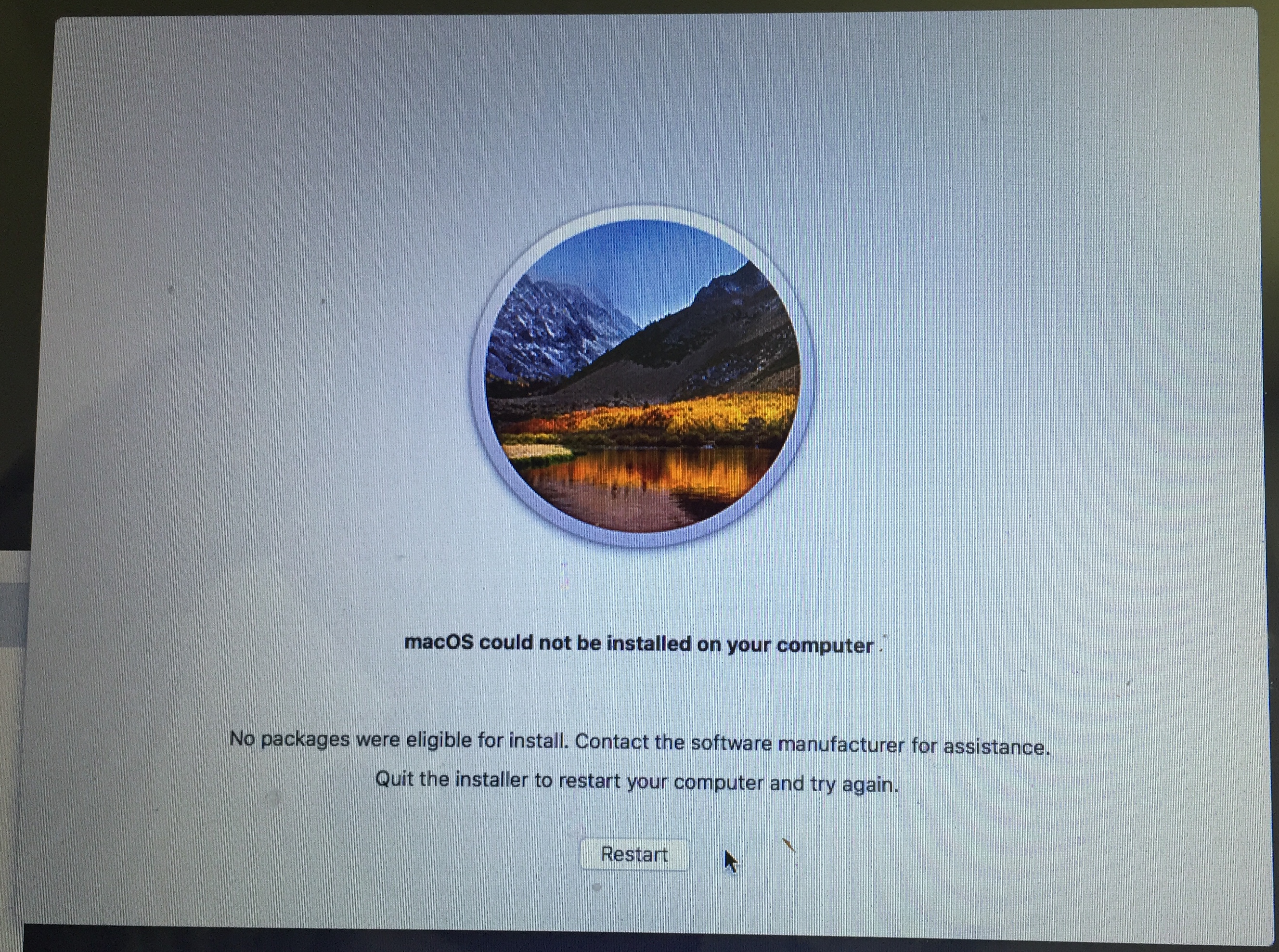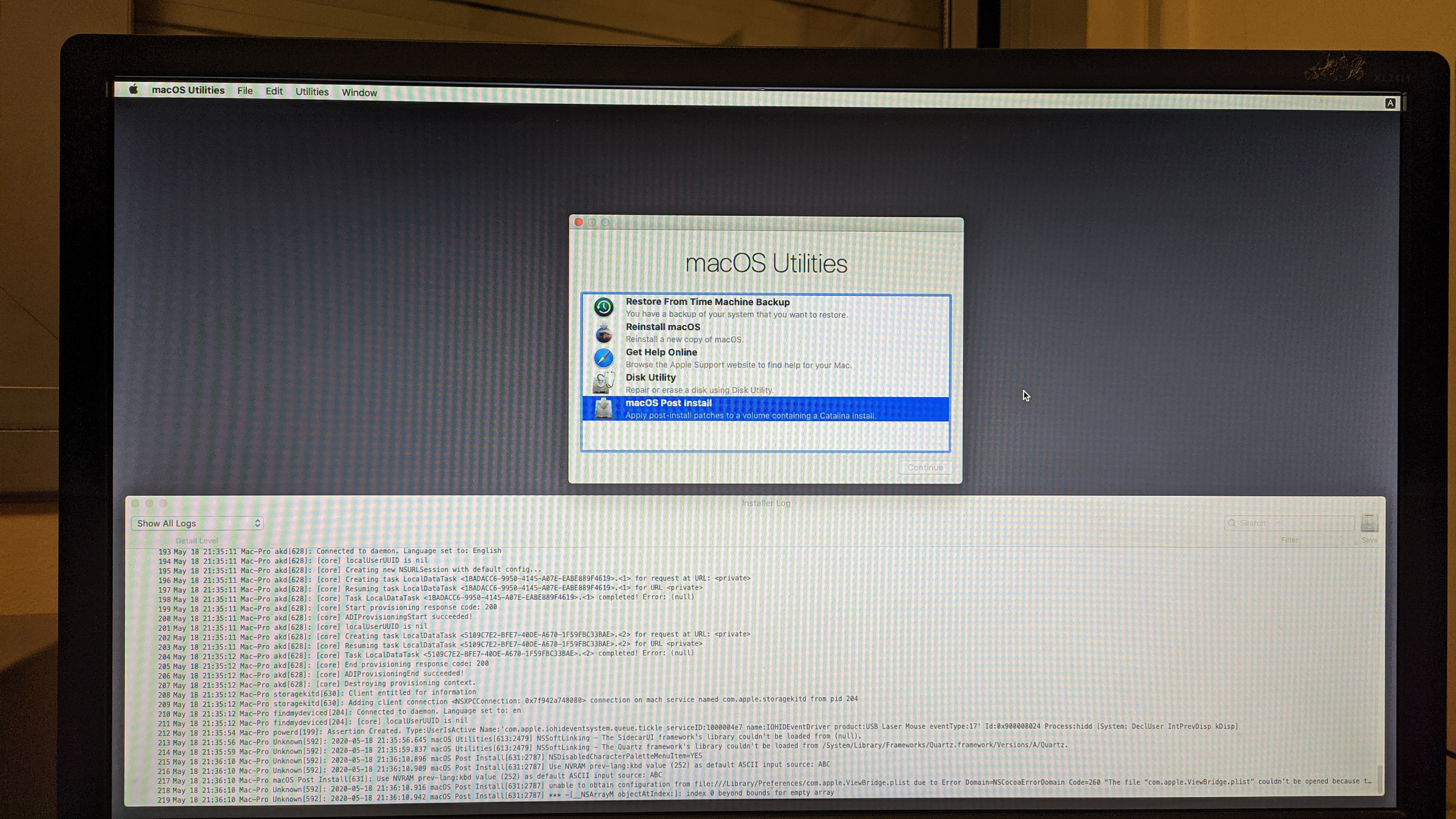Mac Os X No Packages Were Eligible For Install
Here is what we can do: Open disk utility from the Utilities menu or from the Utilities folder. Now you need to select the disk on which you want to install Mac OS X. Select the partition tab in the Disk utility Windows. You will then see a pop up menu from which you have to choose the desired number of partitions you are looking for. The previous drive was bad. I erased the new harddrive with Disk Utility and selected the recommended MAC OS Extended (Journaled). The new drive shows with the named partitioned file. I installed the original Macbook Air installation disk 10.5 in the Macbook Air external Super Drive. When I attempt to install I get the above message.
Important Notes:
Mac os x theme for windows 8 deviantart. Nov 04, 2019 - Install an older version of Mac OS X, (if your machine can go up to el capitan, but if it doesnt install elCap, try installing Yosemite, etc.). No packages were eligible for install.
- Using APFS is REQUIRED in Mojave in order to receive system updates via the normal Software Update method. If you choose to continue using macOS Extended (Journaled) as your filesystem type, you will NOT receive System Updates via System Preferences. If you are not using APFS, you can follow the 10.14.1 installation steps below.
- After applying ANY system update via Software Update, re-applying post-install patches using your Mojave Patcher installer volume will most likely be necessary. If you install a software update and the system fails to boot afterwards, this is what needs to be done.
- Nov 07, 2019 No packages were eligible for install. Facebook; Twitter; Sign in to follow this. No packages were eligible for install. By Himself, November 7, 2019 in AMD Mojave Help Center. Reply to this topic; Start new topic; Recommended Posts. Himself 1 Himself 1.
- Nov 08, 2019 Ive tried this way of installing mojave on my Macbook Pro 8,1 but cant get pass installation. “OS X could not be installed on your computer. No packages were eligible for install”.
- Jul 04, 2016 'OS X could not be installed on your computer. No packages were eligible for install.' Is there something I'm missing here? It used to be perfectly functional under OS X.
10.14.6
10.14.6 can be updated normally via Software Update if using an APFS volume, and will need to be patched using an installer volume created with Mojave Patcher version 1.3.2 or later after installing.
10.14.5
10.14.5 can be updated normally via Software Update if using an APFS volume, and will need to be patched using an installer volume created with Mojave Patcher version 1.3.1 or later after installing.
10.14.4
10.14.4 adds new changes that ARE NOT patchable by the post-install tool of Mojave Patcher v1.2.3 and older! Before updating to 10.14.4, you you will need to use the latest Mojave Patcher version to create a new installer volume, using the 10.14.4 installer app. Then, update to 10.14.4, either by installing via Software Update, or by just using the installer volume you've created to install.
10.14.3

If you are currently running 10.14.1 or 10.14.2, you can simply use the Software Update pane of System Preferences (if using APFS) to apply the 10.14.3 update. Once the update is installed, you will most likely need to re-apply post-install patches to get the system to boot again. This process is detailed in steps 8 - 10 above. If you are currently running 10.14.0, you'll need to proceed with the 10.14.1 update method described below.
 10.14.2
10.14.2Hackintosh No Packages Were Eligible
If you are currently running 10.14.1, you can simply use the Software Update pane of System Preferences (if using APFS) to apply the 10.14.2 update. Once the update is installed, you will most likely need to re-apply post-install patches to get the system to boot again. This process is detailed in steps 8 - 10 above. If you are currently running 10.14.0, or are using a non-AFPS volume, you'll need to proceed with the 10.14.1 update method described below.
10.14.1/macOS Extended (Journaled) volumes
Mac Os X No Packages Were Eligible For Install
The Mojave 10.14.1 update does NOT install properly on unsupported machines, and could result in an unbootable OS. If you want to install the 10.14.1 update (and are not currently running 10.14.1), perform the following steps:
• Download the latest version of Mojave Patcher
• Download the installer using the Tools menu of Mojave Patcher
• Create a patched USB installer
• Boot from that, and install 10.14.1 onto the volume containing an older release.
• Once done, apply the post-install patches, and you should now be on 10.14.1.
Os X No Packages Were Eligible For Installation Date Change
Os X No Packages Were Eligible For Installation
If you ever get this error while attempting to install OS X, you will likely need to set the date using terminal.
The simplest way to set it (if you have no OS installed on the machine) is to boot the install media, open the terminal and check the date (type date).
The following information was found on someones site (sorry I forget which), but I have included it here to make it easier to correct this issue.
Use the following command in terminal to set the machine to a time and date of your choosing:
Mac Os X No Packages Were Eligible For Install
 date {month}{day}{hour}{minute}{year}
date {month}{day}{hour}{minute}{year}For example, to set it to 8pm on the 2nd October 2018
date 100220002018
The command below will output the current date in a format suitable for use on another machine:
date '+%m%d%H%M%Y.%S'
Further, the following (mouthful of a command) will let you specify a date and time in a more readable format and set it in one go:

 date -f '%Y-%m-%d %H:%M:%S' '2016-07-09 15:20:10'
date -f '%Y-%m-%d %H:%M:%S' '2016-07-09 15:20:10'